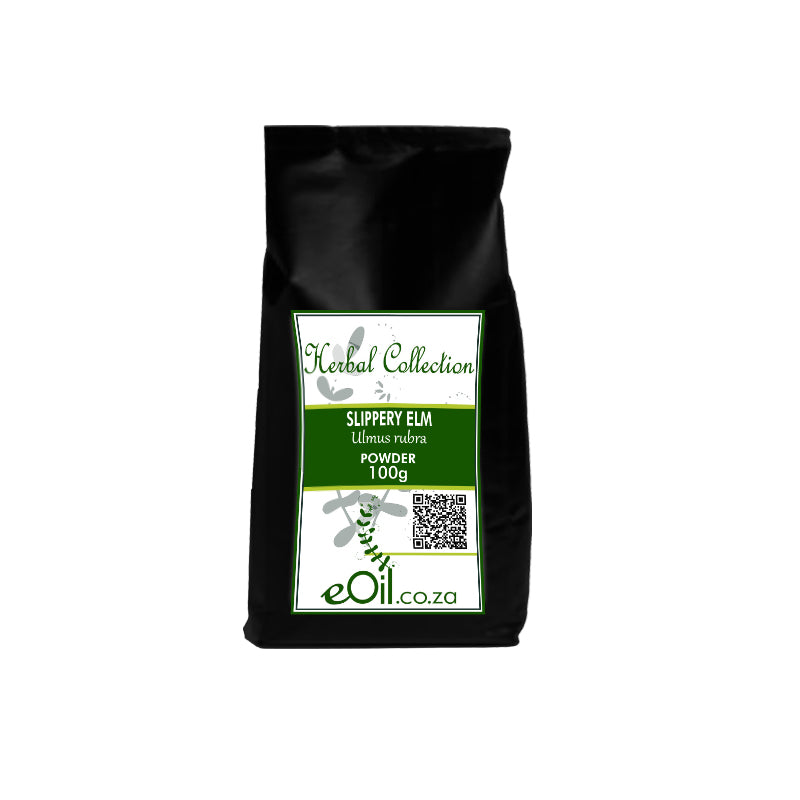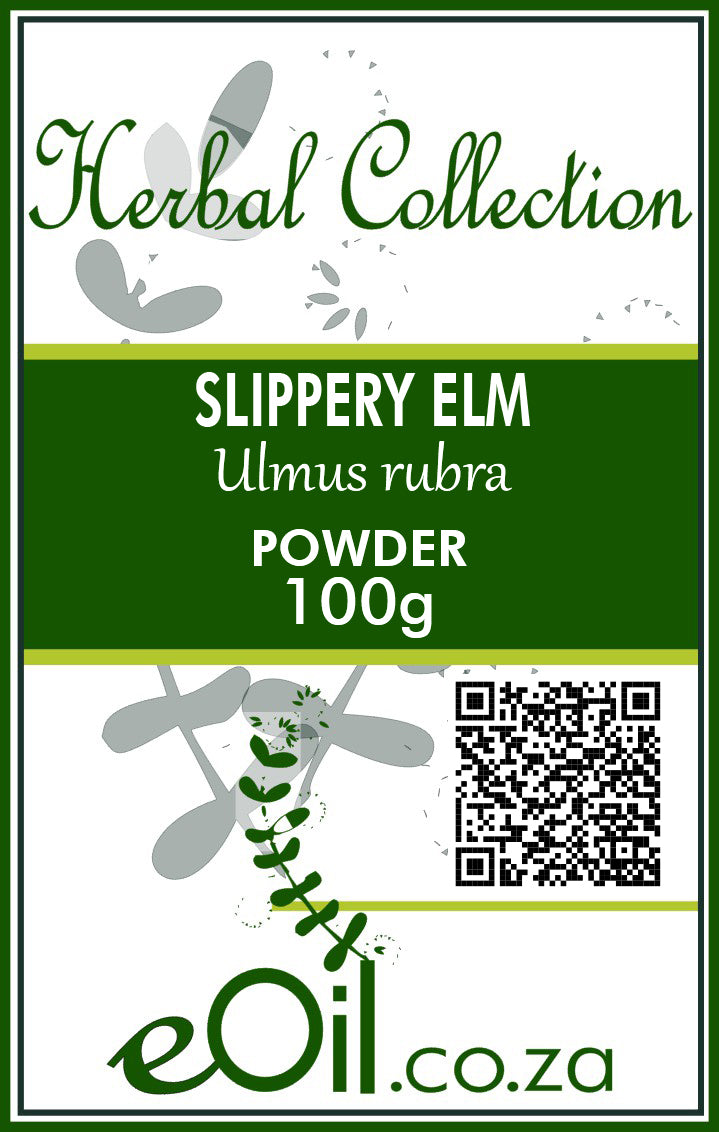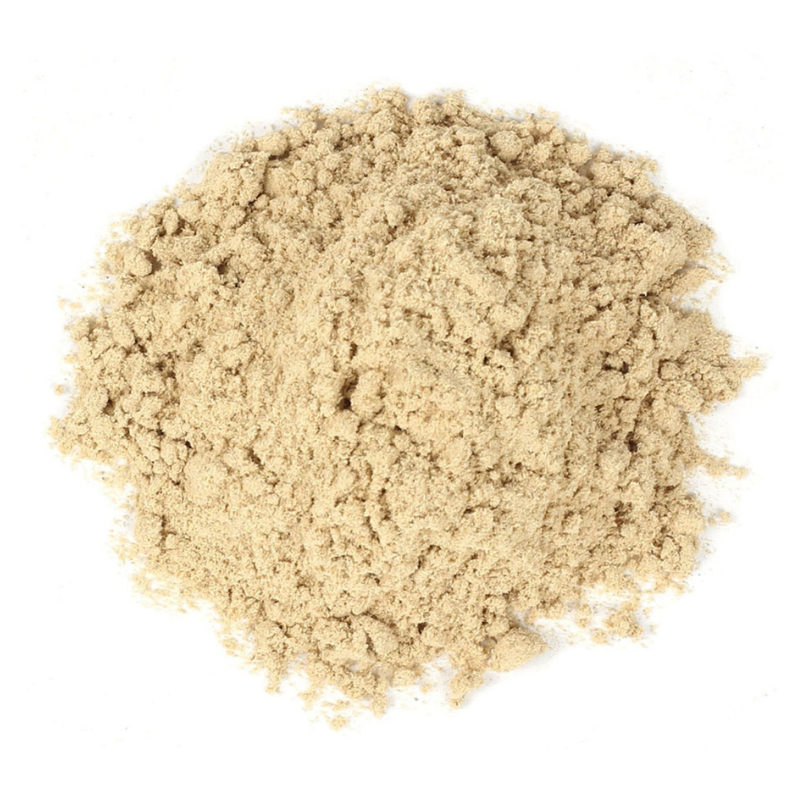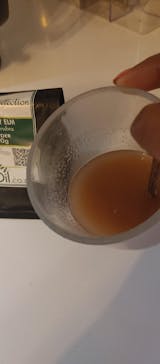Slippery Elm Powder - Herbal Collection
Slippery Elm Powder - Herbal Collection - 100 g is backordered and will ship as soon as it is back in stock.
Description
Description
Slippery Elm Powder ( Ulmus rubra ) - 100 g & 1 kg - Herbal Collection
Dried slippery elm powder, derived from the inner bark of the slippery elm tree, is a traditional herbal product known for its soothing properties.
It is a versatile ingredient that can be incorporated into teas, smoothies.
TRADITIONALLY USED FOR
Slippery elm powder is derived from the inner bark of the slippery elm tree (Ulmus rubra) and has a long history of use in traditional medicine. Here's what it's known for and how to prepare it:
The preparation time for slippery elm in water varies depending on the method used:
Cold Infusion
For a cold infusion, which extracts the most demulcent properties:
- Mix 1 tablespoon of slippery elm powder with 1 cup of lukewarm water
- Let it sit for a minimum of 4 hours, preferably overnight (8+ hours)
Hot Preparation
When using hot water:
- Add 1-2 tablespoons of slippery elm powder to a cup of hot water
- Stir until dissolved, which usually takes just a few minutes
- Allow to steep for 3-5 minutes before drinking
Instant Preparation
For immediate consumption:
- Mix 1 tablespoon of slippery elm powder into a glass of water or juice
- Stir well and drink immediately
It's important to note that finer powder may take longer to thicken the liquid, but is still effective even when consumed right away. The consistency should be slightly thick and gel-like, which is key to its soothing properties for the digestive tract.
Slippery elm is known for its ability to form a gel-like consistency when mixed with water, which is primarily due to its high mucilage content. This mucilage is a key component that gives slippery elm its beneficial properties for gut health.
Gel-like Consistency
When slippery elm powder is mixed with water, it indeed forms a viscous, sticky substance. This gel-like texture is what you're looking for to help soothe and coat your gut. The mucilage in slippery elm is hydrophilic or "water-loving," meaning it swells in size when it comes into contact with water, developing a slippery consistency.
Bulking Properties
In the context of slippery elm, "bulk" refers to two aspects:
Fiber content: Slippery elm contains soluble fiber, which can add bulk to stool and potentially have a mild laxative effect
. This fiber absorbs water in the intestines, forming a soft, bulky stool that can help with bowel regularity.
Mucilage swelling: When the dried inner bark of slippery elm comes into contact with water, it swells in size, creating a gel-like bulk
. This is the property that allows it to coat and soothe the digestive tract.
It's important to note that the gel-forming ability of slippery elm is distinct from its bulking properties. The gel-like consistency you're seeking for gut health is primarily related to the mucilage content, which forms a protective coating over irritated tissues in the digestive system.
Preparation for Gut Health
To achieve the gel-like consistency for your gut, you can mix slippery elm powder with water to form a slurry
. This preparation allows the mucilage to hydrate and form the soothing gel that can coat your digestive tract, potentially helping with issues such as inflammation, irritation, and excess acidity.Remember that while slippery elm is generally considered safe, it's always best to consult with a healthcare professional before starting any new supplement regimen, especially if you have existing health conditions or are taking medications.
Traditional Uses of Slippery Elm Powder
- Soothes the digestive tract: Slippery elm contains a substance called mucilage. When mixed with water, this creates a gel-like substance that coats and soothes the lining of the esophagus, stomach, and intestines. It's often used for:
- Heartburn and acid reflux
- Sore throat
- Cough
- Inflammatory bowel conditions (Crohn's, ulcerative colitis)
- Diarrhea or constipation
- Topical use: Slippery elm can also be applied topically to help soothe skin irritation, wounds, or burns.
How to Prepare Slippery Elm Powder
There are a few different ways to use slippery elm powder:
- Tea:
- Mix 1-2 tablespoons of slippery elm powder with 1 cup of boiling water.
- Let it steep for 3-5 minutes.
- Strain and drink 2-3 times per day.
- Gruel:
- Combine slippery elm powder with water or milk to create a paste-like consistency.
- You can add honey or cinnamon for flavor if desired.
- Consume a small amount several times a day.
- Capsules: Take slippery elm capsules as directed on the product label.
- Topical Poultice:
- Mix slippery elm powder with enough water to form a paste.
- Apply directly to the affected area of skin.
- Cover with a clean cloth and leave on for several hours or overnight.
Important Considerations
- Pregnancy and breastfeeding: Consult with your doctor before using slippery elm if you are pregnant or breastfeeding.
- Medication interactions: Slippery elm may interfere with the absorption of certain medications. Take it at least 2 hours before or after any medications.
- Talk to your doctor: It's always best to consult with your healthcare provider before using slippery elm powder, especially if you have any underlying medical conditions.
INFORMATION
Source : http://www.wikiphyto.org/wiki/Elm
Reference on http://www.wikiphyto.org
Translation in English by Google Translate (go to the page of the source linked | on Chrome cellphones go on the 3 dots on the top right and select translate in your preferred language | on laptop right click your mouse and select option translate when hoovering on the page
plant name
field elm
International Latin denomination
botanical family
Ulmaceae
Description and habitat
- Beautiful tree with bushy crown up to 35 m high, paths, hedges, woods
- Leaves hairy, coarse, toothed, asymmetrical at the base
- Reddish or greenish flowers
- The fruit is a winged samara
History and tradition
Parts used
- Bark, buds
Dosage forms available
- Bark tincture
- Glycerine macerate of buds
Usual dosages
Composition
Main components of the plant
Main components of buds or young shoots
Main components of essential oil
Properties
Plant properties
- Astringent by its tannin
- Ulmus americana L. is antifungal
Bud properties
Properties of essential oil
Indications
Indications of the whole plant (phytotherapy)
Dermatoses
Indications of the bud (gemmotherapy)
- Great transition remedy as a complement with other buds. [1]
- Marked action in the various disorders of nucleoprotein catabolism; uric acid, gout.
- Secondary action on urea and cholesterol.
- Marked action in the body's tendencies to transfer its endogenous disorders to the skin in the form of uninfected vesicular eczema, also acting on certain diarrhoea, leucorrhoea linked to functional metastases.
These metastases are the result of a tissue or several tissues arriving at the beginning of a hypergamma fibrosclerosis, whose metabolism decreases sharply and is balanced by substitution reactions by unblocking the hepatic macrophages.
- With Rosa canina : recurrent herpes, ocular herpes
Specific indications of essential oil (aromatherapy)
Known or suspected mode of action
Usual formulations
Regulations
Possible side effects and precautions for use
Bibliographic references
- Go↑ Henry Pol. Gemmotherapy, therapy with plant embryonic extracts. Author's edition. Brussels, 1982.
- Teresa Valle, José L López, José M Hernández, Purificación Corchete. Antifungal activity of scopoletin and its differential accumulation in Ulmus pumila and Ulmus campestris cell suspension cultures infected with Ophiostoma ulmi spores. Plant Science, Volume 125, Issue 1, 9 June 1997, Pages 97-101
CAUTION
Store in a cool, dry place, away from light. Keep tightly closed, away from the reach of Children and pets.
Do not exceed the daily dose.
This product is not intended to prevent or cure any form of illness or disease.
If you are pregnant or nursing ; If you have a medical condition or are in the course of medical treatment ; If you are programmed for theater/operation in the near future, please consult your healthcare practitioner before using this product.
This product cannot replace a varied and balanced diet and a healthy lifestyle.
This product has not been evaluated by the SAHPRA for its quality, safety or intended use.

Slippery Elm Powder - Herbal Collection - 100 g is backordered and will ship as soon as it is back in stock.







